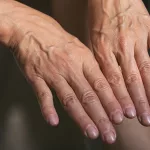
Cannabis affects people differently, and even if you use it regularly, your reaction can vary from one occasion to the next.
Sometimes it produces the relief you expected — whether that’s easing anxiety or boosting appetite. Other times, particularly with products high in tetrahydrocannabinol (THC), it can heighten stress and trigger anxious feelings.
Anxiety brought on by cannabis can escalate into a panic attack for some people, which may include:
- profuse sweating or trembling
- a sudden, overwhelming sense of impending doom
- worries about being judged or observed
- a racing pulse
- difficulties breathing
- intense fear
- chest pain or sensations of choking
- stomach upset or nausea
- dizziness
- numbness, tingling, or chills
- a feeling of detachment from yourself or reality
It’s also common to fear you might die or lose control. Although terrifying, these are typical experiences during panic attacks.
The reassuring news: panic attacks aren’t usually dangerous and tend to subside on their own, often within about 10 minutes. That said, those minutes can feel unbearably long when panic is intense.
Below are practical strategies to help you cope while waiting for the episode to pass.
Tell yourself you’re not in immediate danger
Panic attacks can present differently for different people, and it’s normal to wonder whether you’re facing something serious like a heart attack or an overdose, especially if this is your first panic attack.
The fear you feel during a panic attack is genuine, but the danger it signals isn’t real. Reassuring yourself that the episode is temporary can help you begin to relax.
You may experience unpleasant effects after consuming too much cannabis, but this isn’t life-threatening, even if it seems like it.
Quick calming routineFind a comfortable seat — the couch, the floor, or a favorite chair. Close your eyes and take a slow, deep breath. Repeat to yourself, “I’m safe. I’m having a panic attack. This will pass.” Keep repeating this phrase as you breathe slowly and naturally until the panic eases.
Stay calm and eat something
Using cannabis on an empty stomach can amplify THC’s effects, sometimes producing a stronger high than anticipated.
An easy remedy is to eat a snack. Even a light bite can mitigate cannabis’s intensity and help soothe anxious feelings.
Some research indicates terpenes such as limonene, present in citrus, might ease THC’s impact. If you have a lemon, zest and squeeze some into water — add a little sugar or honey if the tartness is too sharp.
If lemons aren’t available, check your spice rack. Black pepper also contains helpful terpenes.
If you have whole peppercorns, chew a couple; if you only have ground pepper, cautiously sniff it (don’t inhale directly, which can cause irritation).
Find more ways to stop feeling overly high.
Practice deep breathing
Hyperventilation, or very rapid breathing, commonly occurs during panic attacks.
Breathing too fast reduces carbon dioxide levels, which can cause tingling in the hands and feet and lightheadedness — sensations that can worsen panic.
Slowing your breath can often produce rapid improvement. If you already have a breathing method you use, try it. If not, the exercises below can help.
Basic deep breathing
This technique uses mouth breathing:
- Get comfortable. Sitting or standing with your back supported can help.
- Inhale slowly for 3 to 4 seconds, noticing your lungs fill. Some find it useful to place a hand on their belly and feel it rise.
- Hold the breath for a second or two.
- Exhale slowly for 3 to 4 seconds.
- Repeat until lightheadedness diminishes and breathing becomes more natural.
Alternate nostril breathing
Keep your mouth closed for this nose-focused method:
- Close one nostril with a finger.
- Inhale slowly through the open nostril for 2 to 4 seconds.
- Hold for 1 to 2 seconds, then exhale slowly. Repeat this twice.
- Switch and close the other nostril, repeating the process.
- Continue alternating until your breath slows and you feel calmer.
Use grounding techniques
Knowing you’re having a panic attack doesn’t automatically ease it. Your mind may race, your heart may pound, and breathing may be difficult. You’re aware you’re not dying, yet you still feel awful.
Grounding techniques can help pull you back into the present and reduce overwhelming fear.
Try these simple grounding exercises:
- Run your hands under cold or warm water.
- Pick up the first three things you can reach, one at a time — a blanket, a book, a remote — and focus on their texture, shape, and color. Simply holding something can reconnect you with the present.
- Pet or gently stroke an animal if one is available.
- Use the 5-4-3-2-1 method: name five sounds, four textures, three visible items, two smells, and one taste.
Find more grounding methods here.
Move your body
A panic attack isn’t the moment for intense exertion, but gentle movement can reduce anxiety and panic symptoms.
Physical activity not only distracts you from fearful sensations but also releases endorphins, which can calm you.
Try a short, brisk walk around your block or backyard.
If leaving the house isn’t an option, try indoor activities such as:
- yoga
- gentle stretching
- jumping jacks
- marching or jogging in place
Even pacing inside helps. Turn walking into a mindful grounding task by naming objects you pass, for example: “Sofa. TV. Candles. Cat toys. Bookshelf. Desk.”
Consider aromatherapy
In older novels you might read about smelling salts used to revive someone who had fainted. Strong scents can pull you back to the present, and more pleasant aromas may soothe you as they do.
If you have essential oils, try scents like lavender, pine, or lemon balm to use terpenes to your advantage.
Other quick options include:
- lighting a scented candle
- opening fragrant lotion
- brewing a cup of herbal tea (the aroma can calm you, and the drink can hydrate)
The takeaway
A panic attack won’t kill you, though that knowledge may not make the experience any less frightening. If you want to avoid cannabis-induced panic in the future, the only guaranteed method is to abstain. However, you can reduce your risk by choosing low-THC products or ones with balanced CBD and THC ratios.
Be especially cautious with edibles: wait the full 2 hours to assess their effects before taking more.


















Leave a Reply
You must be logged in to post a comment.